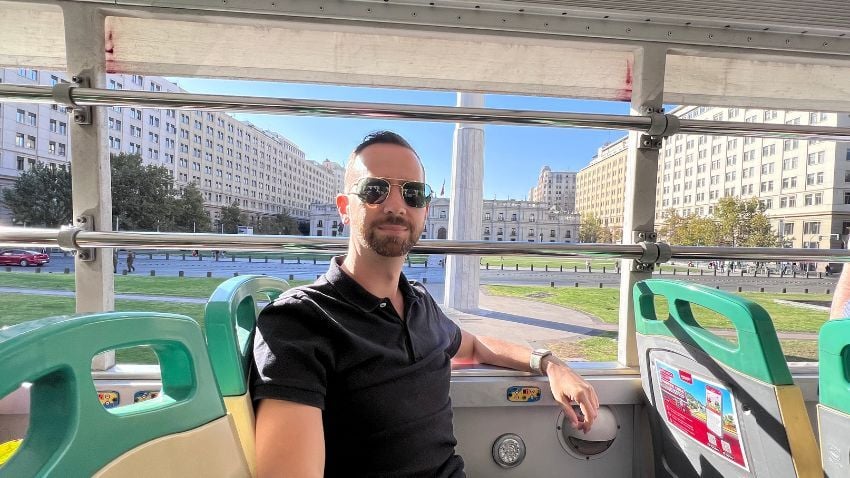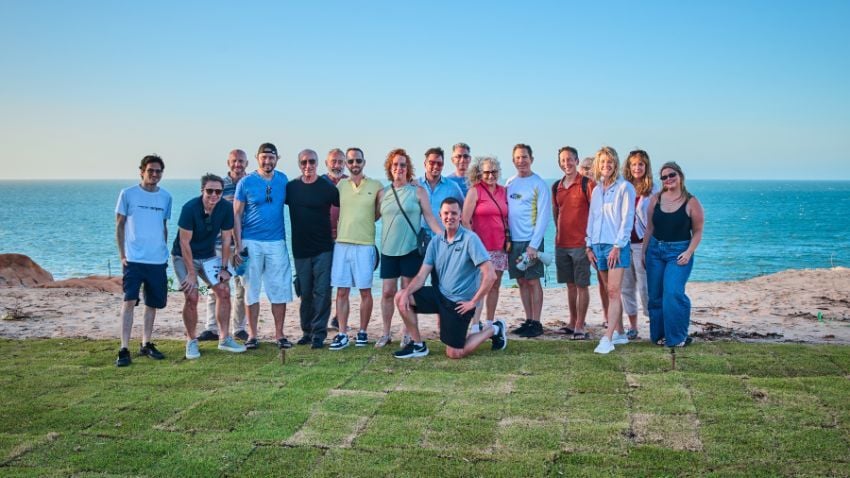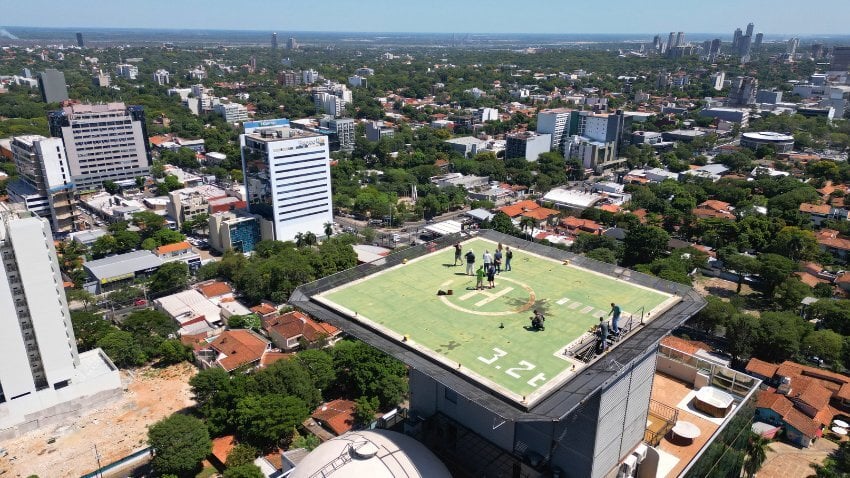Secure Your Offshore Plans Before Nuclear War Begins
What would you do if tensions between world powers escalated to nuclear conflict? With the ongoing crises in the Middle East and Ukraine, many people...

9 min read
Latin America encompasses a remarkably diverse range of countries known for their distinctive histories, characteristic cities, and unique communities. From the beaches of Mexico in the north to the glaciers of Argentina in the south, Latin America offers a range of opportunities and lifestyles that appeal to everyone.
Due to overlapping terminology, misunderstandings frequently arise, making it difficult to define what constitutes Latin America. Terms such as South America, Central America, and the Caribbean are often mistakenly used interchangeably, confusing the exact geographical and cultural boundaries. Is every Spanish‑speaking country "Latin"? Where do Portuguese‑speaking Brazil or French‑influenced Caribbean islands fit?
In this article, I’ll explain the elements that define Latin America and distinguish it from related regions.

Chile stands out in Latin America for its high quality of life, offering a mix of modern urban living in Santiago and world-class natural beauty across its diverse regions
The term "Latin America" is primarily cultural and linguistic rather than strictly geographic. For general purposes, it refers to all the countries in the Americas south of the United States where Romance languages are prevalent. However, to gain a deeper understanding of Latin America, geographic and cultural explanations should be studied in conjunction with each other. Let's start with a geographic definition.
Latin American territory begins with Mexico in North America, runs through the nations of Central America, and extends across South America from Colombia in the north to Chile and Argentina at the continent's southern tip. However, some parts of the Caribbean, whose dominant colonial languages are Spanish or French, are also considered part of Latin America. The English-speaking islands, such as Barbados and Jamaica, are not considered part of Latin America.
Although geography helps us to visualize Latin America, it is far more than just a territory. The cultural elements of Latin America, such as language, colonial history, and religious practices, ultimately define the region.
Romance-language Roots: Latin was the language of the Roman Empire, and languages such as Spanish, Portuguese, Romanian, Italian and French derived from Latin. The term "Latin America" was popularized by French intellectuals in the 19th century to emphasize their shared Romance language heritage. Given that Spanish is the dominant language in approximately 19 countries in the Americas, over 210 million Brazilians speak Portuguese, and French is widely spoken in parts of the Caribbean, it could be argued that the word “Latin” strongly describes these countries.
Colonial Heritage: Colonial rule, particularly Spanish domination, is one of the primary factors that have shaped Latin America. Spanish and Portuguese invasions began in the 15th century and continued into the 19th century. Although the French Monarch was unsuccessful against its Spanish and Portuguese competitors, the French influenced certain parts of the Caribbean. Indigenous and African traditions blended with Iberian (Southwestern European) norms to create distinct yet related cultural traditions, such as Mexican mariachi and Afro-Brazilian samba.
Religion & Syncretism: The definition of Latin America would be incomplete without factoring in its religious aspects. Roman Catholicism arrived with the soldier-explorers of the Spanish and Portuguese Empires and remains influential to this day. In contrast to Protestantism in the U.S. or Canada, Latin America is predominantly Roman Catholic. However, it has often fused with Indigenous and African beliefs, producing unique local religious practices, such as Mexico's Día de los Muertos or Brazil's Candomblé. The practice of combining elements from different religions is known as syncretism.
Even if each Latin American country has its unique history-dependent cultural qualities, the linguistic, historical, and religious commonalities give Latin America a recognizable cultural cohesion.
Latin America is usually divided into three regions. First, we have Mexico and Central America, which many refer to as the "northern tier." Then comes South America, the continental giant. Finally, the Caribbean nations are scattered across the sea like stepping stones of the Spanish, French, and English colonial past.
Mexico is a geopolitical powerhouse with world-class infrastructure and strong economic ties to the United States. You could live in a colonial city such as Mérida, enjoy sunny skies, affordable living, and a rich culture, and still take a direct flight to Dallas or Toronto and arrive before lunch. Mexico acts as the bridge that connects the United States to the rest of Latin America on a geographic, economic, and cultural level. Although it is located in North America, it is considered part of Latin America because of its Spanish language and heritage.
As we move down the map, Central America greets us. Don't be fooled by its small size; it is as diverse as the rest of Latin America and offers unique opportunities that you might not find anywhere else.
Panama is a strategic hub. Its official currency is the Balboa, but the U.S. dollar is also widely used in local commerce. The country taxes only local income and manages global freight movement through the Panama Canal with efficiency. Its banking system is financially strong, well-regulated, and supported by modern technology. Visa programs are among the most appealing in the world, attracting entrepreneurs, retirees, and expat families.
Panama is also emerging as a hub for bitcoin and digital assets. In April 2025, Mayor Mizrachi announced that residents of Panama City would soon be able to pay municipal taxes, fees, fines, and even bus tickets using bitcoin, Ether, USDC, and USDT. This forward-looking approach, combined with the country’s openness to expats and international investment, makes Panama a stable environment with expanding opportunities.
Costa Rica is called the Switzerland of Latin America for good reason. This small but prosperous country abolished its military decades ago to establish a stable democracy and maintain neutrality in the face of regional conflicts. Living in Costa Rica is an amazing experience. You can enjoy the jungle on one side and the Pacific surf on the other: no chaos but just pura vida.
Belize, Guatemala, Honduras, and Nicaragua offer a unique blend of culture, strong religious traditions, and natural beauty. Colonial cities frozen in time, towering volcanoes, and ancient Mayan ruins hidden in the jungle are just some of the attractions that make these countries appealing.
El Salvador, meanwhile, has undergone a dramatic transformation under President Nayib Bukele. Once considered one of the most dangerous places in the region, it is now recognized as one of the safest countries in Latin America. The country also pioneered bitcoin usage: though it has formally revoked bitcoin’s status as legal tender, residents and tourists still use it and other cryptocurrencies regularly.

Wearing traditional clothing in Peru reflects a vibrant culture and the warmth of its people
South America is vast, varied, and full of surprises. From high-altitude cities in the Andes to offshore financial centres and beachside escapes, the continent offers expats a wide range of options. Whether you are seeking cultural vibrancy, economic opportunity, or a better quality of life, there is a place here that can meet your needs.
The Andes Mountains form the backbone of South America, running from Venezuela through Colombia, Ecuador, Peru, Bolivia, and into Chile and Argentina. Along this range, high-altitude cities provide temperate climates, striking scenery, and growing opportunities that continue to attract expats.
Colombia has become one of the region’s top destinations, particularly for digital nomads. Medellín, once infamous, has transformed into a model expat hub. Set in a lush valley, the city offers year-round spring weather, modern infrastructure, and an active digital nomad community centred on co-working cafés, rooftop social spots, and affordable living.
Ecuador, a dollarized economy, combines low costs with a high quality of life. Expats can choose between the cooler climate and cultural depth of the Andean highlands or the relaxed lifestyle of its Pacific coast.
Venezuela, by contrast, remains a paradox. Its oil, mineral wealth, and natural beauty make it one of the richest lands in South America, but decades of socialist rule have left it unstable, difficult, and unpredictable for everyone living there.
Argentina has long been a prominent nation in Latin America, characterized by its vast geography, cosmopolitan culture, and diverse economy. Now, President Javier Milei is ending the inflationary cycle in Argentina, which has persisted for decades, and building a free country based on the principles of liberty and a free-market economy.
Chile is Latin America's quiet achiever. Clean, efficient, and focused on business, it's long been one of the region's most stable economies. Santiago is a growing tech and financial hub, while Patagonia and the south offer jaw-dropping natural scenery and slow-paced towns with genuine character.
Uruguay is also an amazing country. Peaceful beaches, a transparent government, and freedoms that most countries still debate. It's small, stable, and safe, perfect for those who prefer a calm life over chaos, with a high quality of life.
Brazil is too big to be boxed in. As the largest economy in Latin America, it plays a central role in agriculture, energy, and industry, exporting everything from soybeans and beef to aircraft and oil. São Paulo stands out as a global financial centre, while other cities like Curitiba and Porto Alegre showcase Brazil’s growing middle-class stability and innovation. At the same time, the northeast is experiencing a real estate boom, with rising demand for modern housing and tourism-driven development creating strong opportunities for investors.
Paraguay, on the other hand, is quietly shifting from a primarily agricultural base toward a more industrialized and modern economy. The country is self-sufficient in both food and energy thanks to abundant hydroelectric resources, while its political stability has strengthened over the past decade.
By opening its economy to global markets and adopting low taxes and investor-friendly policies, Paraguay has positioned itself as a safe and attractive option for those looking beyond the region's traditional powerhouses. Asunción, the capital, is experiencing a real estate market boom fueled by both local demand and international investors. Today, Paraguay is emerging as one of the most appealing expat hubs in South America, thanks in large part to its straightforward and accessible residency program.
If you dream of mountain life steeped in history, this is your zone. Peru offers an ancient culture in full colour, especially in Cusco, the former Inca capital. Here, cobbled streets wind through buzzy markets, colonial cathedrals, and cafés with views of the Andes.
Bolivia offers the same high-altitude charm, but with an even deeper sense of raw, untouched tradition. Located high above sea level, La Paz is one of the world's most unique capitals.

The Dominican Republic combines affordable living and palm-lined beaches with a fast-growing economy, making it one of the Caribbean’s most attractive destinations
The Latin Caribbean is composed of Cuba, the Dominican Republic, Haiti, Guadeloupe, Martinique, Puerto Rico, Saint Barthélemy, and Saint Martin.
Cuba today is trapped under communism, a failed system that has left much of the country frozen in time. For tourists, it often serves as a backdrop of old cars and crumbling buildings, but behind the façade, daily life is marked by scarcity and restrictions. What keeps the country alive is not the system but its people, whose music, art, and passion remain at the heart of Caribbean culture.
The Dominican Republic is the Caribbean's second largest and most diversified nation, located only two hours south of Miami, four hours from New York, and eight hours from most European capitals. It offers breathtaking natural beauty, a rich history, and a complex culture that sets it apart in the region. The country is also one of the most accessible destinations in the Caribbean, with palm-lined beaches, affordable living, and a growing expat community. Its open economy, booming tourism industry, and expanding real estate market continue to attract international investors.
Puerto Rico is an unincorporated U.S. territory with a population of just over 3 million, situated in the Caribbean east of the British Virgin Islands. In addition to the main island, it also encompasses several smaller islands, most of which are uninhabited. It offers the natural beauty of the Caribbean alongside the full benefits of U.S. residency, allowing American citizens to relocate without immigration requirements. Beyond lifestyle appeal, Puerto Rico has become a strategic destination thanks to Act 60, a set of tax incentives that grant major advantages to entrepreneurs, investors, and high-net-worth individuals seeking to lower their tax burden while enjoying island life.
Haiti, also on the island of Hispaniola, is a French- and Haitian Creole-speaking nation with a unique history. Though often excluded from some definitions of Latin America due to language and geopolitical factors, its cultural and historical connections to the region are significant.
Guadeloupe and Martinique are French overseas departments in the Lesser Antilles. French is the official language, and both islands are considered integral parts of France, though they maintain distinct Caribbean cultural characteristics. Their inclusion in Latin America is primarily based on their linguistic and cultural heritage, rather than political autonomy.
Saint Barthélemy and Saint Martin are also French territories in the Caribbean. Saint Barthélemy (or St. Barts) is a French overseas collectivity known for its French-Caribbean fusion culture. Saint Martin is divided between a French collectivity in the north and a Dutch territory (Sint Maarten) in the south. The French portion aligns more closely with Latin Caribbean classifications due to language and historical background.
Together, these territories illustrate the complexity of defining Latin America through a cultural lens. While not all are politically independent or Spanish-speaking, their Romance-language roots and shared colonial experiences contribute to their identification with the Latin Caribbean.

Brazil offers a vibrant mix of rich cultural traditions and booming beachfront investment opportunities, especially in Fortaleza, Ceará, where this photo was taken
Language and Ease of Integration: Spanish (and Portuguese in Brazil) is the daily currency of conversation. Many Latin American countries are so accustomed to expats that even basic Spanish is often enough to navigate daily life throughout Latin America.
Political Stability: Latin America isn't homogeneous when it comes to governance. However, you can easily find a politically and economically stable country that fits your goals and expectations quite easily, such as Panama, Costa Rica, or Paraguay.
Healthcare Quality and Availability: One of the best parts of living in Latin America is access to world-class private healthcare at a fraction of the cost you'd pay in the U.S. or Europe. You can easily find the best private hospitals in Panama, Costa Rica, Brazil, Mexico, or Argentina.
Visa and Residency Requirements: As expats are considered cultural ambassadors who promote business in their respective countries, many Latin American governments offer straightforward residency programs. Permanent residency by investment options, which can lead to citizenship, are also widely available.
Economic Outlook: Some Latin American countries offer territorial tax systems or tax incentives to attract expats and international investors.
Cultural Adaptability: Latin America celebrates community in countless ways, through family ties, neighbourhood gatherings, music, food, and faith. For expats used to more individualistic cultures, this emphasis on togetherness can be both heartwarming and overwhelming.

The Colón Theatre in Argentina showcases world-class architecture and a rich cultural heritage
Understanding Latin America requires looking beyond its geographical boundaries. While the term generally refers to countries in the Americas where Romance languages prevail, it also encompasses a shared colonial legacy, cultural expressions, and religious influences that give the region a distinct identity.
Despite the internal diversity between nations, Latin America is often viewed as a cultural and historical unit shaped by centuries of European contact, Indigenous heritage, and African contributions. Recognizing these elements helps clarify what defines Latin America and how it is commonly categorized across academic, social, and political contexts.
Visiting and even living in Latin America broadens your perspective on life, leading you to discover completely different possibilities that enrich your life in unexpected ways. If you’re considering relocating to Latin America but don’t know where to start, I recommend downloading our special report, ‘Plan-B Residencies & Instant Citizenships.’
If you want the best intel from the expat world, including profitable offshore opportunities, little-known tax-saving strategies, and hard-won insights on immigration, passports, and Plan-B residencies, all delivered to your inbox every single week, then join our daily correspondence, EMS Pulse®. Currently enjoyed by over 84,000 expats and expat-hopefuls worldwide. Fill in the form below to join our newsletter free:

Written by Mikkel Thorup
Mikkel Thorup is the world’s most sought-after expat consultant. He focuses on helping high-net-worth private clients to legally mitigate tax liabilities, obtain a second residency and citizenship, and assemble a portfolio of foreign investments including international real estate, timber plantations, agricultural land and other hard-money tangible assets. Mikkel is the Founder and CEO at Expat Money®, a private consulting firm started in 2017. He hosts the popular weekly podcast, the Expat Money Show, and wrote the definitive #1-Best Selling book Expat Secrets - How To Pay Zero Taxes, Live Overseas And Make Giant Piles Of Money, and his second book: Expats Guide On Moving To Mexico.

What would you do if tensions between world powers escalated to nuclear conflict? With the ongoing crises in the Middle East and Ukraine, many people...

Every year brings new lessons, opportunities, and milestones worth revisiting. As 2025 comes to a close, we’re taking a moment to reflect on the...

Latin America has become one of the most straightforward regions in the world for securing residency. Most countries in the region offer simple,...